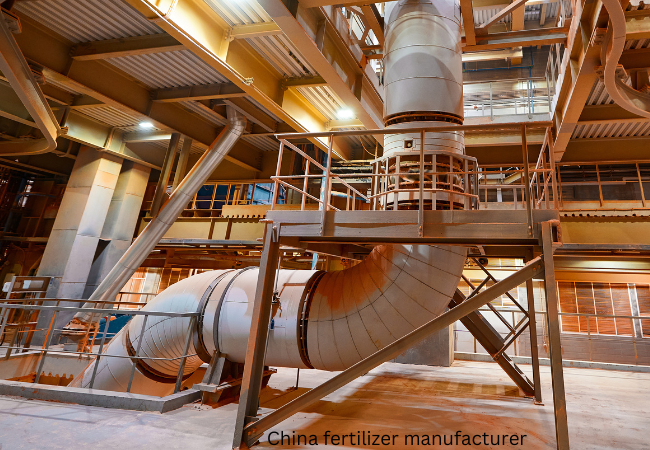China Fertilizer Manufacturer Step by Step Guide

China’s fertilizer industry plays a pivotal role in the nation’s agricultural success, supporting a large portion of global food production. The industry’s growth has been driven by the need to enhance agricultural output to feed its massive population. This sector has seen significant developments over the years, evolving from basic fertilizer production methods to advanced technologies that cater to diverse agricultural needs.
Historically, China’s agricultural sector has relied heavily on fertilizers to improve crop yields. The country’s diverse climate and soil conditions require a wide range of fertilizer types, making the industry both complex and expansive. The growth of this sector is not just a reflection of China’s agricultural ambitions but also a testament to its capacity for innovation and adaptation in manufacturing processes.
Key Players in the Chinese Fertilizer Market
China is home to several China Fertilizer Manufacturer , including both state-owned and private enterprises. Leading companies such as Sinofert Holdings, China BlueChemical, and Hubei Yihua Group dominate the market, each contributing significantly to both domestic and international fertilizer supply.
These key players often specialize in different types of fertilizers, catering to various agricultural needs. The market share is widely distributed, with some companies focusing on nitrogen-based fertilizers while others lead in phosphate or potassium fertilizers. Emerging companies are also making strides, particularly in producing environmentally friendly and specialized fertilizers that cater to organic farming and sustainable agriculture practices.
Types of Fertilizers Produced in China
China’s fertilizer industry produces a wide array of fertilizers to meet diverse agricultural needs:
- Nitrogen-based Fertilizers: These include products like urea and ammonium nitrate, crucial for boosting crop growth by providing essential nitrogen.
- Phosphate Fertilizers: These are vital for root development and overall plant health, including products like superphosphate and ammonium phosphate.
- Potassium Fertilizers: Essential for water regulation and enzyme activation in plants, potassium fertilizers like potassium chloride are widely used.
- Compound Fertilizers: These include blends that provide a balanced supply of essential nutrients, catering to specific crop requirements.
Production Processes and Technologies
The production of fertilizers in China involves a range of sophisticated processes and technologies. Traditional methods like the Haber-Bosch process for ammonia production are complemented by newer, more efficient technologies. Advances in chemical engineering have allowed manufacturers to increase yield while reducing energy consumption and emissions.
Environmental considerations are increasingly at the forefront, with technologies being developed to minimize the ecological footprint of fertilizer production. This includes the recycling of by-products, reducing greenhouse gas emissions, and improving the efficiency of raw material use.
Regulatory Environment and Compliance
China’s regulatory framework for the fertilizer industry is stringent, focusing on environmental protection and sustainable practices. Regulations encompass the entire production process, from raw material extraction to waste management. Manufacturers must comply with national standards that govern product quality, environmental impact, and safety.
Environmental impact assessments are mandatory for new projects, ensuring that any potential ecological damage is minimized. Compliance requirements also extend to the labeling and packaging of fertilizers, with strict guidelines to ensure that products meet both national and international standards.
Export and Import Dynamics
China is a major player in the global fertilizer market, both as a significant exporter and importer. The country exports large quantities of fertilizers to regions including Southeast Asia, Africa, and South America, which are key markets for Chinese products.
Conversely, China imports a substantial amount of raw materials, such as potash and phosphate rock, to supplement domestic production. This dynamic reflects the country’s strategy to maintain a balance between leveraging local resources and accessing essential inputs from the global market.
Innovations and R&D in Fertilizer Production
Research and development (R&D) in China’s fertilizer industry focus on enhancing the efficiency and environmental sustainability of fertilizer products. Innovations include the development of slow-release and controlled-release fertilizers, which improve nutrient uptake efficiency and reduce leaching into the environment.
Biotechnology and nanotechnology are also playing a growing role in fertilizer development, offering the potential for more precise and efficient nutrient delivery systems. These innovations are not only enhancing crop yields but also supporting sustainable farming practices by minimizing environmental impacts.
Challenges Faced by Chinese Fertilizer Manufacturers
Despite its robust growth, the Chinese fertilizer industry faces several challenges. Stringent environmental regulations are pushing manufacturers to adopt cleaner technologies, which often require significant investment. Additionally, the market is highly competitive, with numerous players vying for market share, which can drive down prices and profit margins.
Resource scarcity, particularly in terms of raw materials like phosphate rock, is another challenge. The need to import these materials exposes the industry to global market fluctuations, which can impact production costs and profitability.
Impact of Fertilizer Use on Chinese Agriculture
Fertilizers have had a profound impact on Chinese agriculture, significantly improving crop yields and supporting the nation’s food security. However, the intensive use of fertilizers has also raised concerns about soil health, including issues like soil acidification and nutrient imbalance.
Efforts are being made to promote balanced fertilizer use, incorporating soil testing and precision agriculture techniques to optimize nutrient application. This approach not only enhances crop productivity but also mitigates negative environmental impacts, ensuring the long-term sustainability of agricultural practices.
Sustainability and Environmental Impact
The environmental impact of fertilizer production and use is a critical concern. The industry contributes to greenhouse gas emissions, water pollution, and soil degradation if not managed properly. In response, there is a growing emphasis on sustainable practices, including the development of organic fertilizers and the implementation of best management practices in fertilizer application.
Organic fertilizers, derived from natural sources, offer a more sustainable alternative, though they currently represent a smaller portion of the market. Efforts are underway to increase their production and use, supported by government policies and incentives aimed at promoting sustainable agriculture.
Government Policies and Support
The Chinese government plays a crucial role in the development of the fertilizer industry, offering subsidies, incentives, and regulatory support. Policies are geared towards encouraging innovation, improving product quality, and promoting environmentally friendly practices.
Support for R&D is also significant, with funding and grants available for projects that aim to improve production efficiency and environmental performance. Additionally, the government has implemented policies to stabilize the fertilizer market, ensuring the availability and affordability of essential agricultural inputs.
Economic Impact of the Fertilizer Industry in China
The fertilizer industry is a vital component of China’s economy, contributing significantly to the agricultural sector and overall GDP. It provides employment opportunities for millions and supports the livelihoods of countless farmers by enabling higher crop yields and improved food production.
Economic challenges include fluctuating raw material prices and international market conditions, which can affect profitability. However, the industry’s strategic importance ensures continued government support and investment, fostering growth and development.
Global Market Comparison
China’s fertilizer industry is one of the largest in the world, comparable to major producers like India, the United States, and Russia. The country’s competitive advantages include its large domestic market, established infrastructure, and government support.
However, challenges such as environmental regulations and resource constraints are more pronounced compared to some other major producers. Despite these challenges, China’s focus on innovation.



